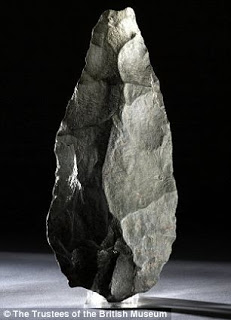All of the information we have of our early ancestors comes from archaeological evidence; such as cave paintings, artefacts, and traces of of possible ritual practices.
Evidence of the development of symbol and ritual comes mainly from the Paleolithic people who emerged about two million years ago.
They were mainly hunters, and much of their industry involved working with chipped stone.
At the time, our ancestors started developing language.
With the beginnings of language and the convenience of tools, man had more time to think and create.
This was the dawn of mythology and symbolism.
It is easy to imagine that their relationship with nature, the seasons and weather, the animals they hunted, the birth of their children and the inevitability of death led them to ponder the events in their lives.
The primitive symbols of the cave, fire, the hand axe, and the representation of animal figures, may have served as foundation metaphors for the complex human mythologies that have subsequently evolved.
The symbols and rituals of primordial human beings may have served to align these people with the rhythms of their bodies, and nature; and to honor the forces influencing them.
MORE ON PRIMORDIAL SIGNS AND SYMBOLS:









This is a fabulous article. Well-written and researched.
ReplyDelete